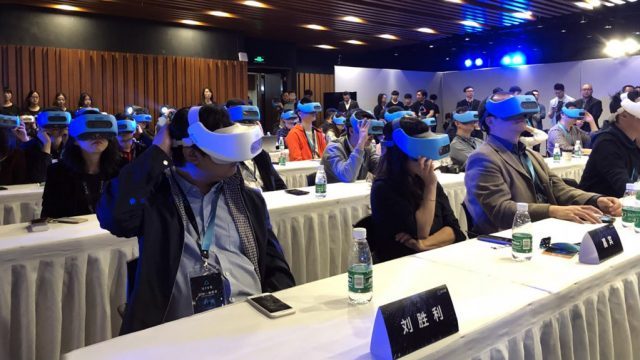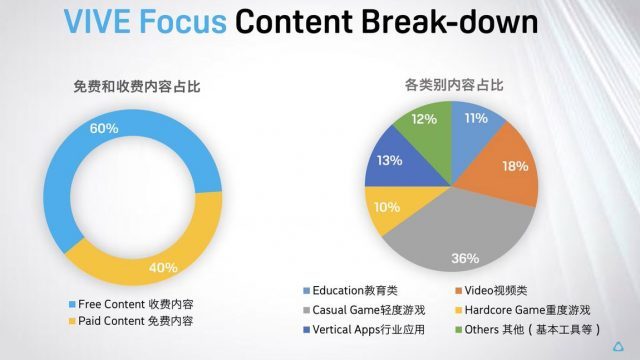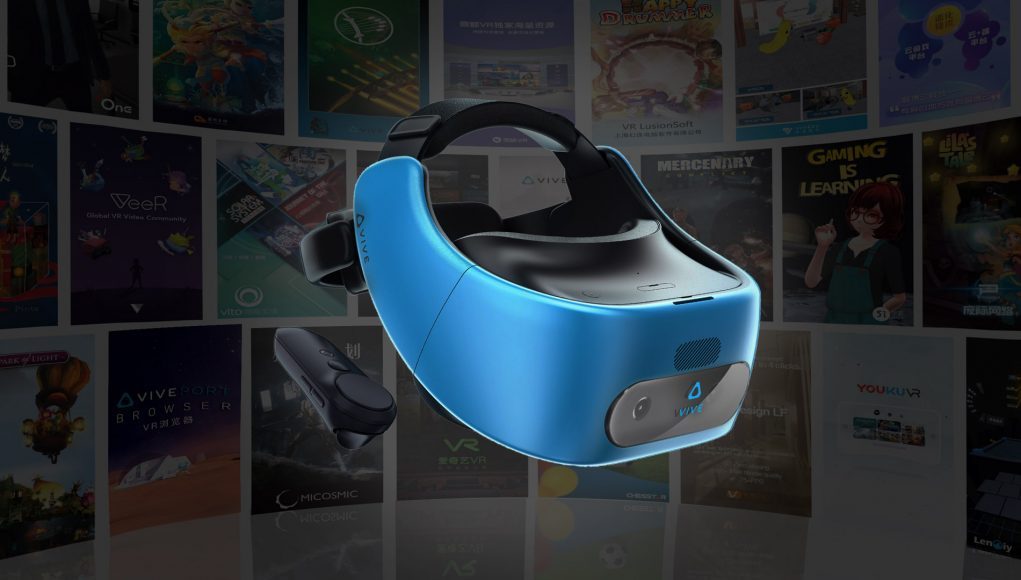Vive Focus, HTC’s first standalone VR headset, has officially launched in China. Based on HTC’s new mobile VR platform, which includes a mobile version of the Viveport content store, the headset debuts with more than 40 apps.
The Vive Focus is HTC’s first standalone VR headset; it has everything on board for VR—including inside-out positional tracking—which means it doesn’t rely on a smartphone or host computer. That makes it more convenient and brings with it a host of other advantages over the usual smartphone docking mobile headsets.

After taking pre-orders starting in December, the Vive Focus launched to the first customers in China this week. HTC held an event where they gave a live demo of the headset to 100 attendees.

The headset is priced roughly $670 and $625 for the blue and white versions of the headset, respectively. As with the Lenovo Mirage Solo standalone, we wonder how attractive the substantial price point will be to consumers, though it’s quite possible that the target audience and market dynamics at play in China are different enough that we can’t apply the same set of assumptions as in Western markets.
The Vive Focus is based on Google’s Daydream standalone reference design (which was itself based on Qualcomm reference hardware), and was announced in 2017 to be one of two Daydream standalone headsets headed for Western markets (the other being Lenovo’s). HTC later scrapped plans to launch the headset in West, and has instead focused on bringing the headset to China, leaving Google’s Daydream platform behind. Instead of Daydream and Google’s WorldSense tracking, the software powering the Vive Focus is called Vive Wave (with content through the company’s mobile Viveport store), and HTC says they’re using their own inside-out tracking code called World Scale.
HTC aims to consolidate China’s mobile VR ecosystem by making Vive Wave an open platform that can be used as the foundation for other mobile headsets beyond the Focus. The Vive Focus launches with some 40 apps in the mobile Viveport store (which will be available on other headsets running Vive Wave).

Though Vive Focus is first out of the gate, Oculus and Chinese electronics company Xiaomi have teamed up to challenge HTC’s mobile VR land grab by soon bringing the Oculus Go headset to China under Xiaomi’s brand. The headset will be dubbed the Mi VR, and will run its own separate content store (not based on Vive Wave).







